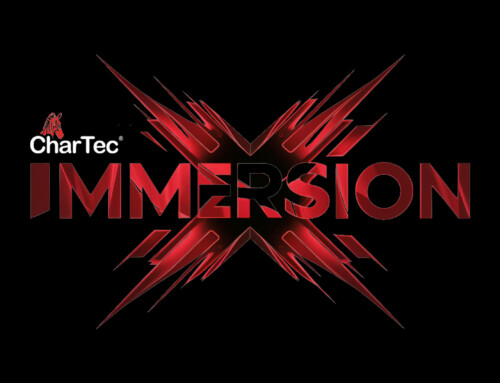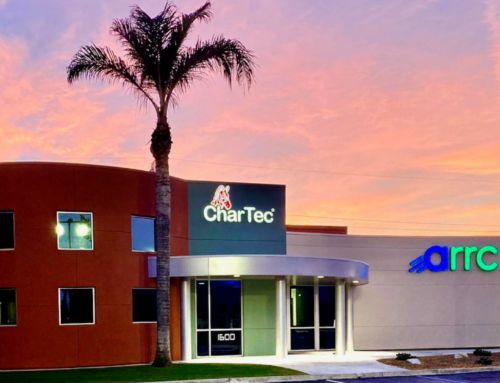The Workforce is Changing
Not every business had a remote working setup before the pandemic hit us, and many felt they had no real need for this type of approach. But times changed dramatically – and at lightning speed – as COVID-19 essentially forced companies to rethink the way people work. The sudden need for employees to work outside of the office posed all manner of challenges. This plan has led to exciting new ways for our clients to take advantage of a faster more secure remote workplace. Not just now, but long into the future.
When employees began working remotely, many businesses found savings immediately. Some even downsized their office space for increased lease savings. We quickly found out that this structure is beneficial for business owners, as well as for employees. It’s the ultimate win-win situation.
New ways to connect to your programs, like CharTec’s Virtual Office, eliminate the vulnerabilities and insecurities of people connecting remotely through VPNs. All data and desktops are located virtually in a Cloud storage center. Everything is accessed remotely with whatever devices people want to use. Whether it’s an iPad, Mac, PC, Chromebook, Smartphone, or something else entirely, they all have the same unified experience across all platforms. Users can log in with one username and password using two-factor authentication.
Stay Connected Safely
Right now, most people use a remote desktop with a VPN to connect to their office. This approach might not be too problematic when done using a laptop set up by your IT department. However, now that people use their personal devices because of the pandemic, the dangers are increasing.
Think about it: people’s home networks are usually nowhere near as secure as their office networks. And their devices are even worse. In many cases, families are sharing home computers while their children deal with remote learning. And, as you know, most children are not very tech-savvy. The possibility of someone somewhere along the line inadvertently downloading malware and compromising the entire network is alarmingly high with this approach.
Virtual Office doesn’t make users choose between security and performance – it gives them the best of both worlds. According to ARRC Technologies Senior Project Manager Sawyer Snowden, the Virtual Office gives users the same experience they’d have in the office.
Virtual Office is User-Friendly
How simple is it to use? Users only need to go to their company’s branded login page and use their Microsoft 365 login. At the first login, users will be asked to set up modern authentication. For example, many users opt to receive a pop-up on their phone with a simple screen asking them to approve or deny the login.
Once they’ve approved, they’ll see a splash page with all the applications available to them. They can launch an application from there or go directly to their full desktop just like they would at the office. After authenticating again, they’ll be presented with the screen of their desktop exactly how they left it the last time they used it.
It’s fast and seamless to switch from device to device. If a user working on their computer has to go somewhere suddenly, they can instantly pass their desktop on to another device, like an iPad, and pick up right where they left off.
Unlike many of the popular solutions used right now, it can support up to three screens. As users lay things out the way they want across their screens and transition from device to device, their settings are saved for future use.
Virtual Office Allows You to Scale Up or Down with Ease
This system will be pretty easy for MSPs to sell their clients. It’s cost-effective, easy to use, and can quickly scale up or down as needed. For example, an accounting firm that needs to scale up at tax time doesn’t need to lose a lot of time and expense on training and setting up computers. Instead, new hires can use their own computer or any other computer with a browser and enjoy a modern desktop experience. When scaling down, it’s easy to disable accounts and convert them to shared mailboxes for employees who are let go.
Snowden believes the name “Virtual Office” makes this solution more appealing to those owners who don’t trust the cloud. Many MSPs find that clients are more receptive to this technology when you use terms like “co-location of data,” “virtual office space” and “hosted data” to describe it rather than “cloud”.
The servers for Virtual Office are all hosted at CorKat. This means companies can consolidate or eliminate much of their onsite infrastructure, reducing costs because any computer or personal device can connect successfully. Look at it as a way to cut costs without impacting employees.
It would be a big mistake to assume that remote working will go away post pandemic. Many companies and workers can see the benefits of working from home far outweigh those of going into the office day in and day out. And, as we know, some employees may never return to the office. Remote working is here to stay, and your MSP clients can implement remote working efficiently and affordably with Virtual Office.
Sign up for our CharTec Academy to learn more about how MSPs can provide new value to their clients. We cover sales, marketing, HR, operations, and finance to help you close more deals and raise your monthly recurring revenue. And make sure to track down Sawyer so you can ask him how easy it is to offer a Virtual Office Solution.
Citations:
- https://www.usnews.com/news/best-countries/articles/2018-02-16/telecommuting-is-growing-but-still-not-unanimously-embraced







Leave A Comment